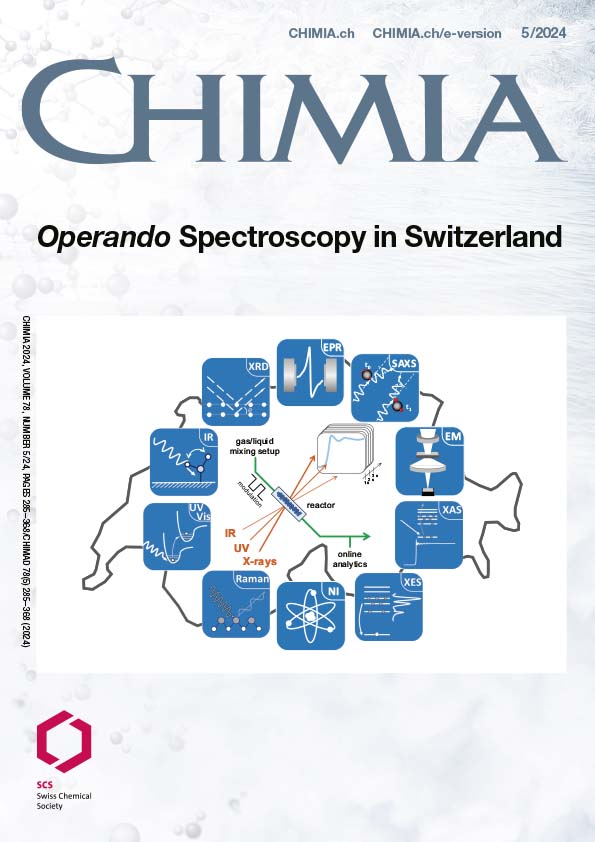Current Developments in Operando Electron Paramagnetic Resonance Spectroscopy
DOI:
https://doi.org/10.2533/chimia.2024.326PMID:
38822776Keywords:
Defect sites, EPR instrumentation, Operando spectroscopy, Transition metal ionsAbstract
Electron paramagnetic resonance (EPR) spectroscopy is a powerful tool for in situ/operando tracking of catalytic reactions that involve paramagnetic species either as a catalyst (e.g. transition metal ions or defects), reaction intermediates (radicals) or poisoning agents such as coke. This article provides a summary of recent experimental examples and developments in resonator design as well as detection schemes that were carried out in our group. Opportunities for applying this technique are illustrated by examples, including studies of transition metal exchanged zeolites and metal-free zeolites as well as metal oxide catalysts. The inherent limitations of EPR applied at high temperatures are discussed, as well as strategies in reducing or lifting these restrictions are evaluated and ideas for future improvements and methodologies are discussed.
Funding data
-
Schweizerischer Nationalfonds zur Förderung der Wissenschaftlichen Forschung
Grant numbers 51NF40_180544 -
Eidgenössische Technische Hochschule Zürich
Grant numbers ETH-48 20-1
Downloads
Published
Issue
Section
License
Copyright (c) 2024 Jörg Fischer, Mikhail Agrachev, Jörg Forrer, Rene Tschaggelar, Oliver Oberhänsli, Gunnar Jeschke

This work is licensed under a Creative Commons Attribution 4.0 International License.







